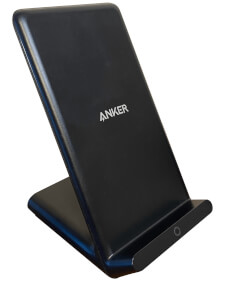Qi Charging
Qi (pronounced "chee," from the Chinese word for "vital force" or "energy") is a wireless charging standard for smartphones and other mobile devices. Qi chargers use inductive charging to deliver electricity from a charging pad to a compatible mobile device over a short range — about 15 mm — without a physical connection between electrical contacts. It allows people to charge their smartphones without plugging and unplugging any USB cables, even through a protective phone case.
Qi charging uses flat wound coils in both the charging pad and the mobile device to transfer power using inductive charging. First, an electrical current is run through the coils in the charging pad, generating an oscillating magnetic field. When you place a mobile device on the charging pad and the two sets of coils are properly aligned, that magnetic field induces an alternating current on the mobile device that provides power to charge its battery.
Wireless chargers are available in a variety of form factors. Most are flat pads that a phone can lay flat on, but you can also find stands that can charge while a phone sits upright (in either portrait or landscape orientation). Some companies even integrate charging pads into desks, end tables, desk lamps, and other furniture.
The convenience offered by wireless charging comes with a few drawbacks. First, you must align the coils in the phone and the charging pad closely, or it won't charge. Wireless charging also delivers power slower than plugging in a charging cable, so it's not ideal when you're in a hurry. Finally, wireless charging is less efficient than wired charging, with some of the electricity drawn going to waste as heat that can, over time, harm the phone's battery health.
NOTE: Many Qi charging pads use USB cables to get power from computer ports and charging bricks, but not every port or charging brick is able to provide enough power. Check the requirements for your charging pad if it does not appear to charge your phone.
 Test Your Knowledge
Test Your Knowledge